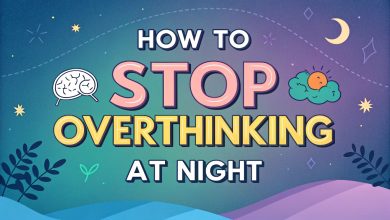An Ultimate Guide to Earth-Friendly Fabrics

There are plenty of earth-friendly fabrics on the market for use in clothing. This article will teach you about some of the most popular materials available today. You’ll learn what fabrics are made from and choose the best one for your needs. You’ll also find out where to find the best deals on earth-friendly materials.
Wool
Choosing suitable earth friendly fabrics can be a daunting task. You want to find a fabric that is durable yet biodegradable. But the fact is, not all fabrics are created equal. This guide will help you determine which fabrics are genuinely earth friendly.
The best eco-friendly fabrics are made from plant-based materials. Wool is one such fabric. It is a natural biodegradable fiber that is completely compostable. Like cotton, wool decomposes quickly.
Wool is also a water-resistant fabric. When it decomposes, it releases essential plant nutrients, which help the environment. In addition, wool has a higher carbon content than other plant-based fibers.
Another eco-friendly fabric is hemp. Hemp is a plant-based fiber that is durable, lightweight, and keeps you warm in the winter.
Linen
Choosing eco-friendly fabrics can be a daunting task. However, the correct information can help you to pick the best ones for you and your family. Luckily, there are several guides available to help you make your pick.
One of the most impressive eco-friendly fabrics is linen. It’s a cellulose fiber that’s derived from the flax plant. It’s lightweight, durable, and biodegradable. You can use linen for clothing, bedding, bath, and furniture. It’s also an eco-friendly material because it uses less water than cotton.
Another eco-friendly fabric is wool. It’s an all-natural biodegradable fiber that’s comfortable in warm weather. It can also be recycled into insulation for cars and other forms of transportation. It’s also considered an eco-friendly fabric because it’s sourced from ethical wool.
Econyl
Whether you are looking for an environmentally friendly fabric or a solution for the rising tide of microplastics, Econyl is an option worth considering. Econyl is a nylon-like yarn from recycled materials, including ocean fishing nets, industrial plastic, and other waste.
Econyl is not biodegradable, but the production process does not release toxic substances in regular nylon. The fabric is durable, soft, and easy to weave. It can be treated with flame retardants and other essential treatments. It can also be dyed. However, most apparel dyes are harmful to humans and animals.
Econyl is made from recycled nylon, and its production process does not involve using fossil fuels. Instead, Econyl producers claim to use a radical regeneration and purification process. However, the Econyl website needs more information about the processes involved.
Tencel
Getting your hands on the best eco-friendly fabrics can be daunting. There are many options, and the fabric labels need to be clarified. You can wind up purchasing something that is only ecologically friendly if you know what to look for. But with some guidance, you can find suitable fabrics for you. This guide will show you the different sustainable materials available and explore what they can do for your wardrobe.
The Higgs Sustainability Index (HSI) was created to measure the impact of several fabrics on the environment. The HSS is a scientific test that measures the performance of various materials, including their energy use, greenhouse gas emissions, water use, and waste removal.
Rayon
Choosing suitable eco-friendly fabrics can be a daunting task. Many labels need to be clarified, and it can be hard to figure out what is environmentally friendly and what is not. Using a guide can help you decode these labels and choose the most eco-friendly fabrics.
Many fabrics are made from synthetic fibers. These are considered harmful to the environment. In addition, some materials are not recyclable and have microplastics when washed. These fabrics include rayon, nylon, and acrylic.
Another standard fabric is lyocell. Lyocell is made from eucalyptus trees grown in PEFC-certified forests. This process is considered more eco-friendly than modal or rayon. In addition, lyocell is made in a closed-loop system.
Tencel is another fabric that has been designed with the environment in mind. The process for Tencel uses water recycling practices and employs over 99% recycled solvents.
Pineapple fiber
Luckily, there’s a wide range of sustainable fabrics available today. Some are designed for eco-conscious consumers looking for the best fashion buys. The trick is knowing which materials to choose and which to avoid altogether. Luckily, several tips and tricks help you make the right choices.
First and foremost, it’s important to choose fabrics made from renewable sources. Unlike polyester or rayon, these fabrics are made from natural fibers, such as cotton and bamboo, and require no additional raw materials. In addition, it’s essential to look out for fabrics with recycled content. It will keep your outfit from polluting the planet while wearing it.
Aside from organic cotton, pineapple fiber is one of the most sustainable fabrics. Typically, this fiber contains a polyurethane resin coating, making it one of the most accessible materials to recycle.
Synthetic fabrics
Whether you wear natural or synthetic fabrics, your choice will significantly impact the environment. But, there are some advantages to synthetic materials, as well as drawbacks.
Natural fibers are made from plants and animals but still have downsides. They use much water, land, and energy and may contain toxic dyes. They also contribute to chemical pollution.
Synthetic fabrics are artificial, often based on petroleum, coal, or natural gas. They are usually cheaper than natural fibers and can be recycled. However, they are not entirely biodegradable. They can release microplastics into the environment and take hundreds of years to decompose.
Many synthetic fabrics are made with toxic chemicals. These chemicals pollute the environment and can harm textile workers.




